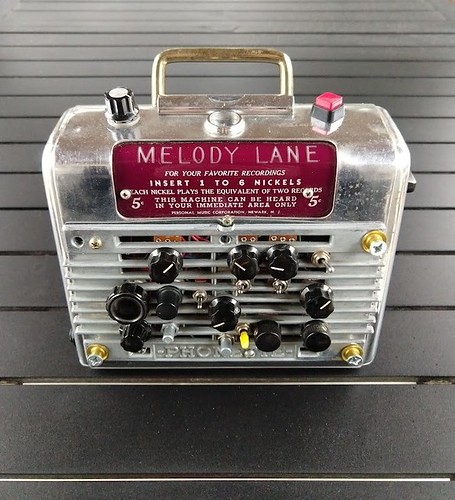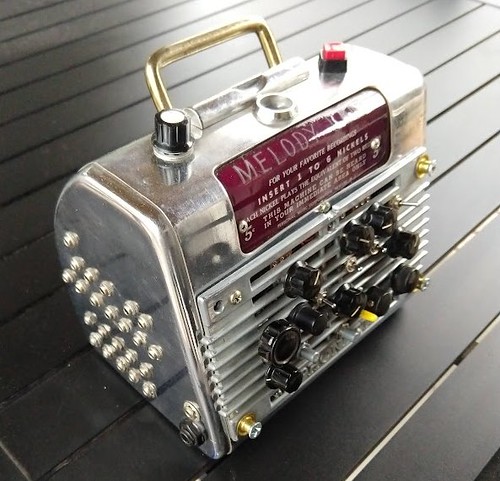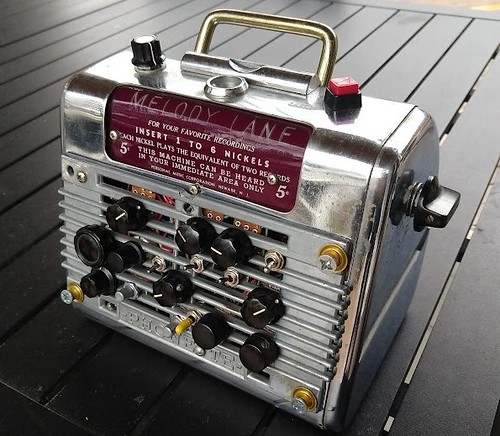Melody Lane
Generally speaking, I design my electroniums to be played by myself. This instrument is an exception to that. The Melody Lane was conceived as a gift to another musician. Like the Goldberg Junior module (that started the process that led to the design of Noise Ring), The Melody Lane was designed as a bread & butter gift for a friend’s generous hospitality.
When I was invited to play at the 2023 Electronicafest at the National Electronics Museum. Frank Vanaman graciously offered to put me up in his home in Lutherville Maryland. Frank is a remarkably gifted, eclectic musician and instrument builder. and so I decided that a DIY electronium would be an appropriate thank you for his outsized hospitality.
The audio architecture is basically two autonomous voices routed through a Forbidden Resonator and then brute-force gated by an on/off gate at the final stage. The control voltage scheme is my usual tangle of sample/holds and comparators.
It can be played with no patch cords but there is an extensive patch panel available on the left side surface..
Another distinguishing attribute of this instrument is that I’m a big fan of VCAs but this design yielded the results I wanted without a single VCA. This was by no means a deliberate omission. I just sort of looked at the prototype and noticed. “Hmmm, not a VCA to be found anywhere, and yet I still like what I’m hearing. So be it!”.
Frank is a prodigiously talented keyboardist. (unlike myself). He’s particularly adept at the theater-organ style which means his feet are involved as much as his hands are. This is a skill that still shocks me every time I see it demonstrated. So I felt a bit of an obligation to provide him with some kind of manual controller aside from the front panel knobs that ‘conduct’ the quirky oscillator schemes. So I gave Frank that one red button on the top. That button triggers a ‘rundown’ clock that outputs gates at a rate that steadily deceases over a period of time. I use these gates alone, and in various combinations with other on-board gate sources, to ‘chop’ the audio at the output into rhythmic chunks. Crude but effective. The Knob on the top surface sets the duration of the ‘rundown’ period with can be from a second, to almost a minute. There’s a ‘mode’ switch on the right-side that selects among this chopper’s various rhythmic combinations.
The whole device is housed in a charming little chrome box that Tory Starbuck gave me,. Tory figured I’d put some kind of musical mayhem inside it, sooner or later. The ‘Melody Lane’ legend on the top is translucent and was backlit by an incandescent bulb. So I refrained from resisting the urge to put a couple of LED status lights behind various letters. I looked-up the ‘Melody Lane/Phonette by the Personal Music Corporation of Newark NJ’ and learned that it was a personal jukebox system used in the 1940’s & 50’s.
“This is a coin operated wall jukebox system that allowed the customer to hear 2 records for a nickel. The Melody Lane “Phonette” was made in the 1940s and 50s. It’s a ‘Multiphone”, installed in cafes, hotels, motels, and taverns. The system required two leased telephone lines, one for the ‘multiphones’ and the other for the loudspeakers on the wall where the music played. The wired music system worked by inserting a nickel. A feminine voice asked for your song number, and you responded. Soon you were listening to the music from the loudspeakers on the wall connected to a central, record playing station.”
Well… That was then…this is now.
Now, I gave it the ability to play it’s own music, untethered to any phone-lines and freed from the banal demands of just any consumer with a nickel. I sealed-up that coin-slot! Viva la Revolucion! Have fun Frank! & Many thanks!




Comments are closed.